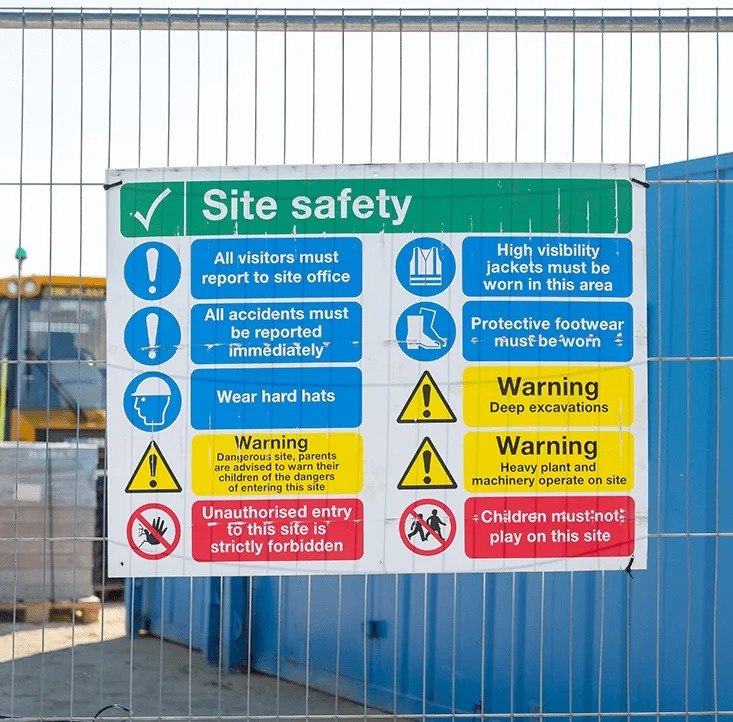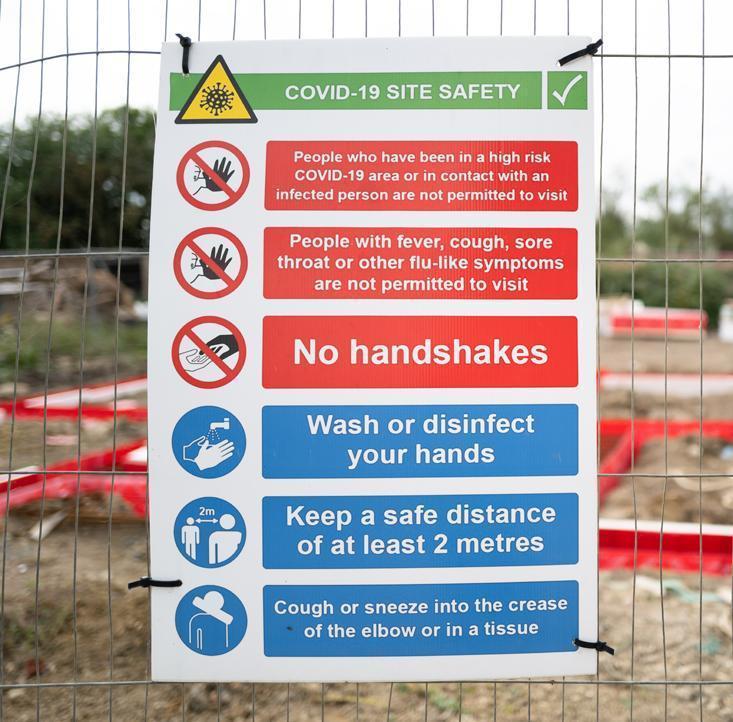
Construction sites are dynamic and hazardous environments where clear construction site signs play a crucial role in preventing accidents. Poorly placed or unclear signage can lead to confusion and injuries, making effective signage essential for safety and compliance. Well-designed, strategically positioned signs improve awareness, guide workers, and meet legal requirements. This guide covers key strategies to enhance signage through optimal placement, design, visibility, lighting, and maintenance. Whether for a small project or a significant development, these tips will help create a safer worksite.
The Importance of Construction Signs
Construction site signs play a significant role in maintaining safety and order. From warning pedestrians to guiding workers, well-placed and highly visible signs contribute to:
Accident Prevention
Clear signs reduce the risk of falls, collisions, and injuries by highlighting dangerous areas and safe routes.
Regulatory Compliance
The UK’s Health and Safety at Work Act requires appropriate signage on all construction sites. Failure to comply can lead to legal consequences and project delays.
Operational Efficiency
Signage improves workflow by directing workers to key areas like first aid stations, exits, and restricted zones.
Without clear signage, a construction site becomes a hazardous, confusing space. Proper hoardings and sign placements help maintain order and minimise risks.

Strategic Placement
Even the most well-designed sign is useless if it isn’t positioned correctly. Strategic placement is key to ensuring that signage is visible and effective.
Best Locations for Signage
- Entrances and Exits: Safety signs should be placed at all entry and exit points, ensuring that workers and visitors know site rules when they arrive.
- High-Risk Areas: Warning signs should be displayed near deep excavations, scaffolding, electrical hazards, and moving machinery.
- Walkways and Pedestrian Zones: Signs should indicate designated pathways to prevent workers and visitors from straying into hazardous areas.
Avoiding Obstructions
- Machinery and Equipment: Ensure signs are not blocked by parked construction vehicles or storage containers.
- Excessive Sign Clustering: Too many signs in one place can overwhelm and lead to confusion. Space them appropriately to ensure each message is clear.
Optimising Height and Angle
- Place signs at eye level where possible to ensure they are easily seen.
- Use elevated signs in areas where obstructions might block ground-level signage.
By placing signs strategically, construction sites can significantly enhance safety and ensure all personnel are aware of hazards.
Design Elements for High Readability
A sign’s effectiveness depends mainly on its readability. To make construction site signs stand out, consider these design elements:
1. Colour Contrast
Using high-contrast colour combinations ensures that signage grabs attention.
|
Colour Combination |
Purpose |
|
Black on Yellow |
General warning signs |
|
White on Red |
Fire safety and prohibition signs |
|
White on Blue |
Mandatory safety instructions |
2. Typography and Font Size
- Use bold, simple fonts such as Arial or Helvetica for clarity.
- Avoid using scripts or fancy typefaces that are difficult to read.
- Ensure the text is large enough to be seen from a reasonable distance.
3. Use of Pictograms and Symbols
- Universal safety symbols help communicate messages quickly.
- Icons like “Hard Hat Required” or “No Entry” make signs more effective.
4. Reflective and Illuminated Signage
- Reflective materials ensure signs are visible in low-light conditions.
- Illuminated signs are essential for night-time construction work.
A well-designed sign combines colours, fonts, and pictograms to create a message that is instantly recognisable and easy to understand.
The Role of Lighting in Signage Effectiveness
Proper lighting ensures signs remain visible throughout the day and night. Here’s why it matters:
LED Lighting for Maximum Visibility
- LED-lit signs ensure 24/7 visibility.
- Energy-efficient and long-lasting LED lights are ideal for construction sites operating at night.
Emergency Lighting for Power Failures
- Backup lighting prevents critical signs from becoming unreadable in case of power outages.
- Solar-powered lighting can provide a sustainable solution for remote construction sites.
Ensuring signs are properly illuminated can significantly reduce accidents, especially in poor weather or low-light conditions.

Hoardings: Enhancing Safety and Branding
In addition to standard safety signs, hoardings serve multiple purposes on a construction site. These large panels contribute to both safety and branding in the following ways:
- Safety Barriers: Hoardings act as a protective shield, preventing pedestrians and nearby properties from being exposed to construction debris, dust, and noise. They create a secure boundary that minimises risks and ensures public safety.
- Privacy Screens: Construction sites often require privacy, especially in high-traffic areas. Hoardings help conceal ongoing work, maintaining a professional appearance while preventing unauthorised access and reducing distractions for workers.
- Branding Opportunities: These panels provide a valuable space to showcase company logos, project details, and safety messages. Customised hoardings can reinforce a company’s identity, highlight key stakeholders, and promote upcoming developments, turning the site into a marketing tool.
By combining hoardings with clear safety signage, construction sites can improve safety while maintaining a professional appearance.
Regular Inspections and Maintenance
- Weather Damage: Rain, wind, and sunlight exposure can cause fading and deterioration. Inspect signs regularly.
- Dirt and Obstruction: Signs should be cleaned periodically to ensure messages remain clear.
- Replacement and Upkeep: Damaged signs should be replaced immediately to maintain compliance and safety.
A well-maintained signage system ensures that safety messages remain visible and effective.
Construction Site Signage Compliance
Construction sites must comply with strict regulations regarding safety signage.
Key Legal Requirements:
- All hazard areas must be marked with appropriate warning signs.
- Mandatory signs (e.g., “Hard Hats Must Be Worn”) must be displayed in relevant areas.
- Emergency exits and fire safety routes must be signposted.
Failing to comply with these regulations can result in fines, project delays, and increased safety risks. Investing in high-quality signage ensures compliance and improves site safety.
Conclusion
Ensuring that construction site signs are visible, strategically placed, and well-maintained is crucial for site safety. Whether using high-contrast colours, reflective materials, or proper lighting, every element plays a role in creating effective signage.
Additionally, hoardings are safety barriers and branding opportunities, reinforcing a professional and secure construction environment.
By prioritising clear, readable, and well-positioned signs, construction site managers can reduce accidents, improve efficiency, and meet legal requirements. Board Printing Company provides high-quality signage solutions that help create safer, more organised construction sites, ensuring compliance while enhancing site aesthetics.





Leave a Reply